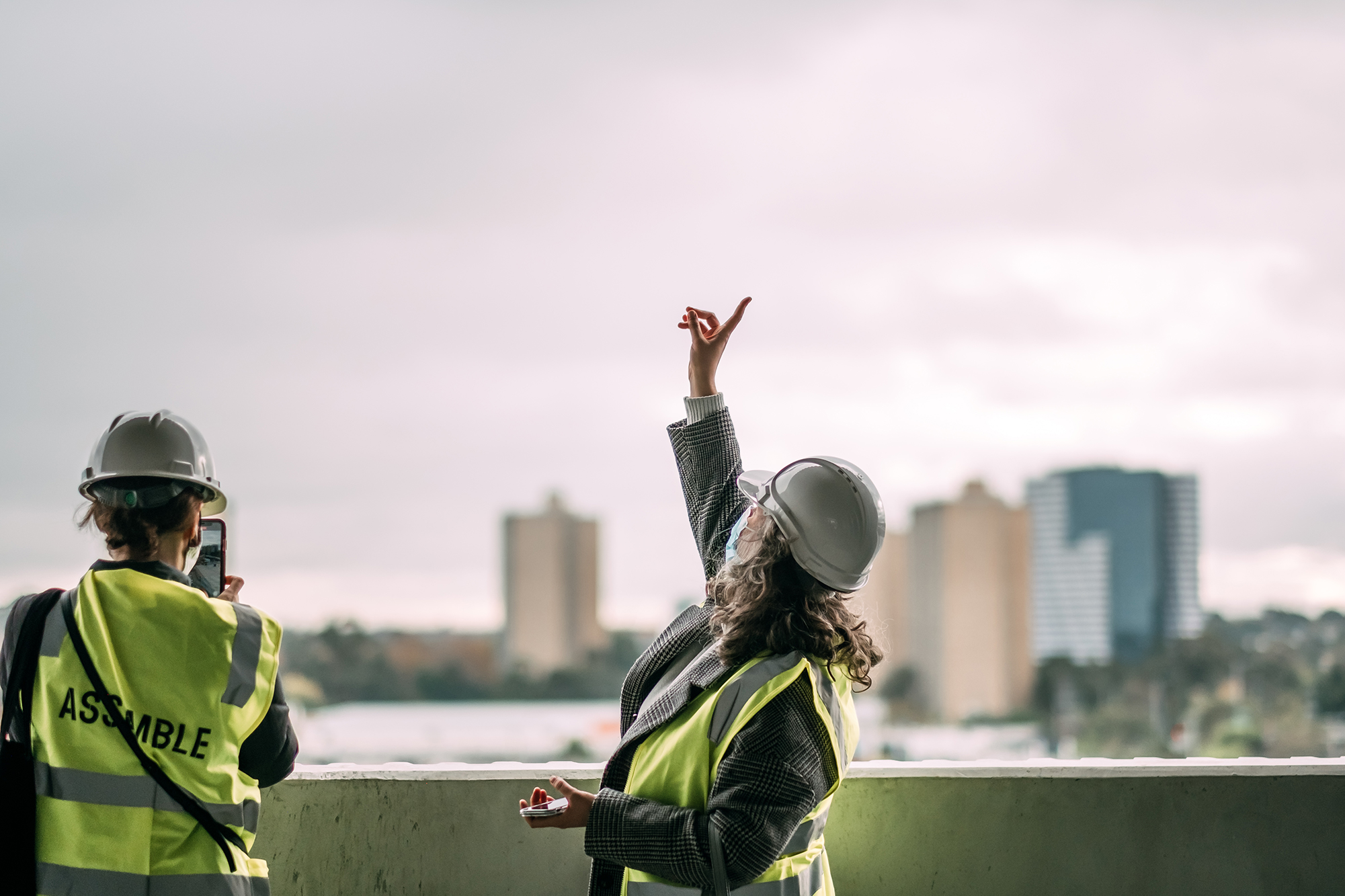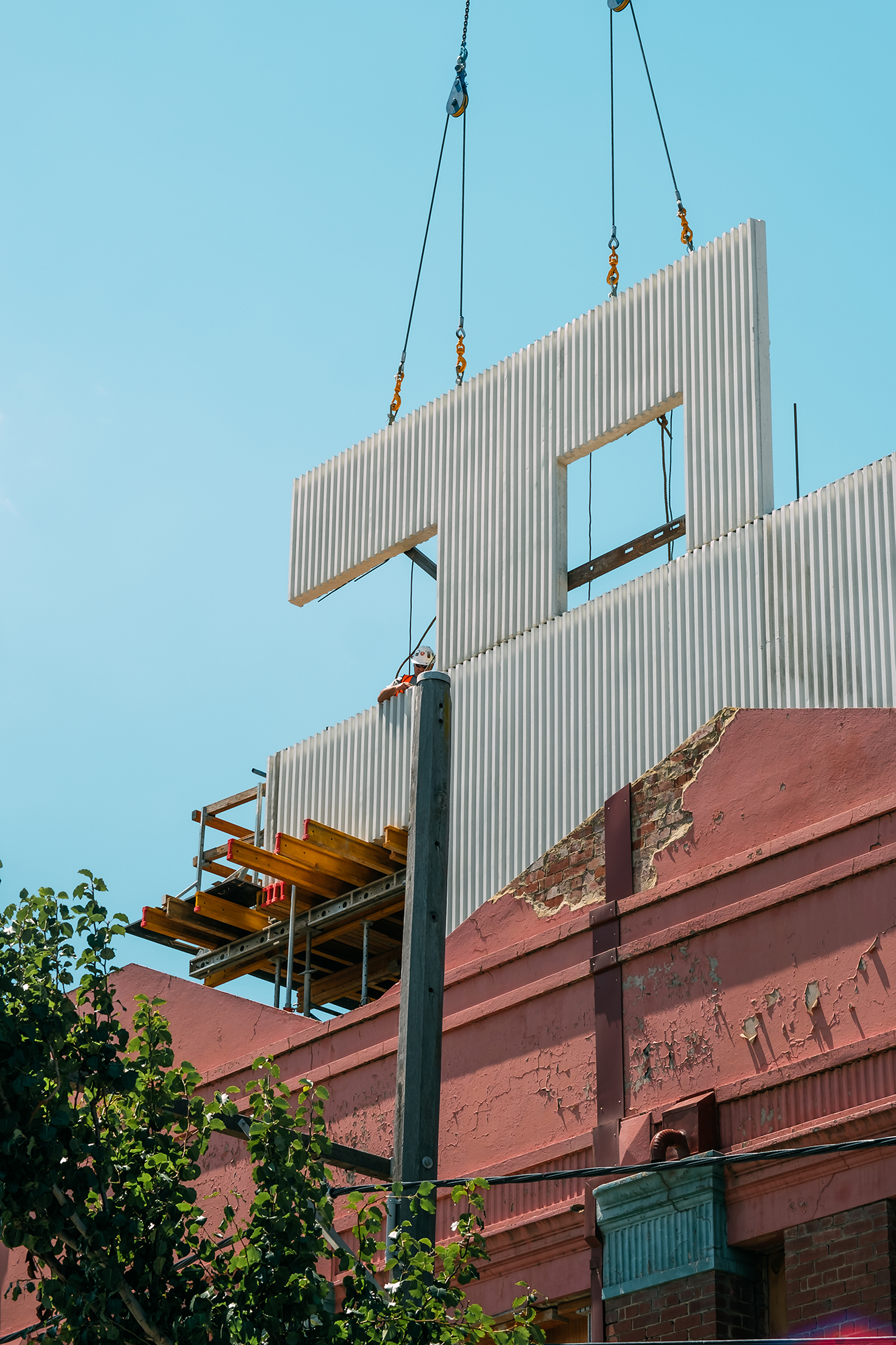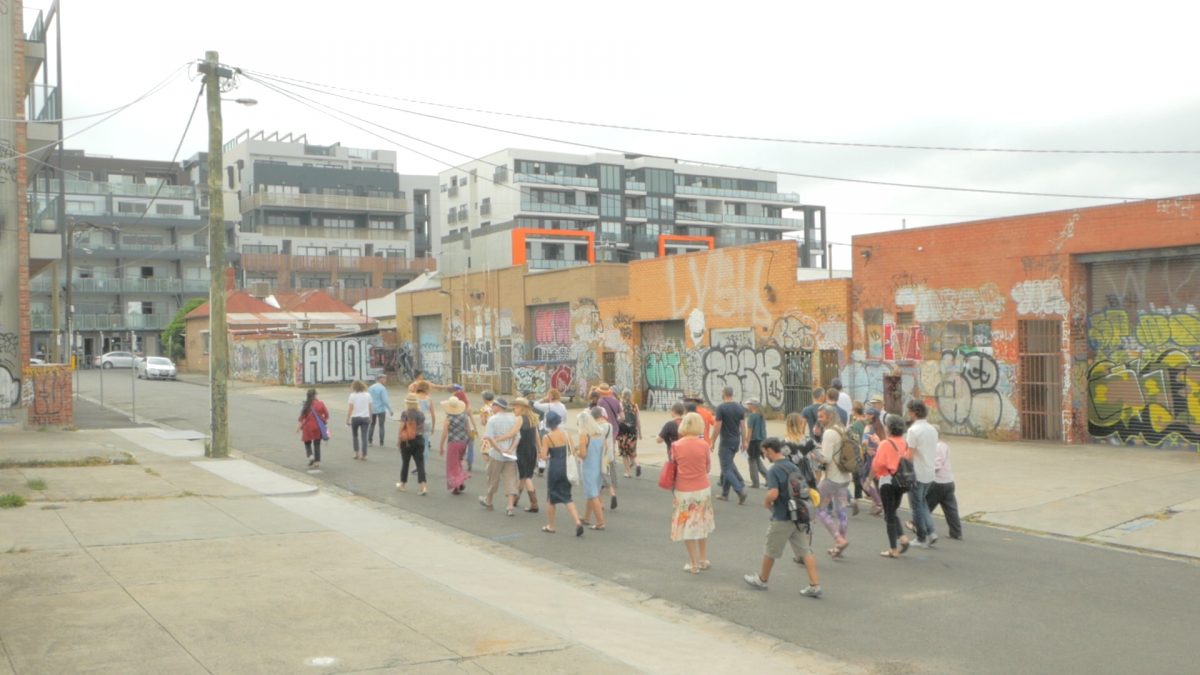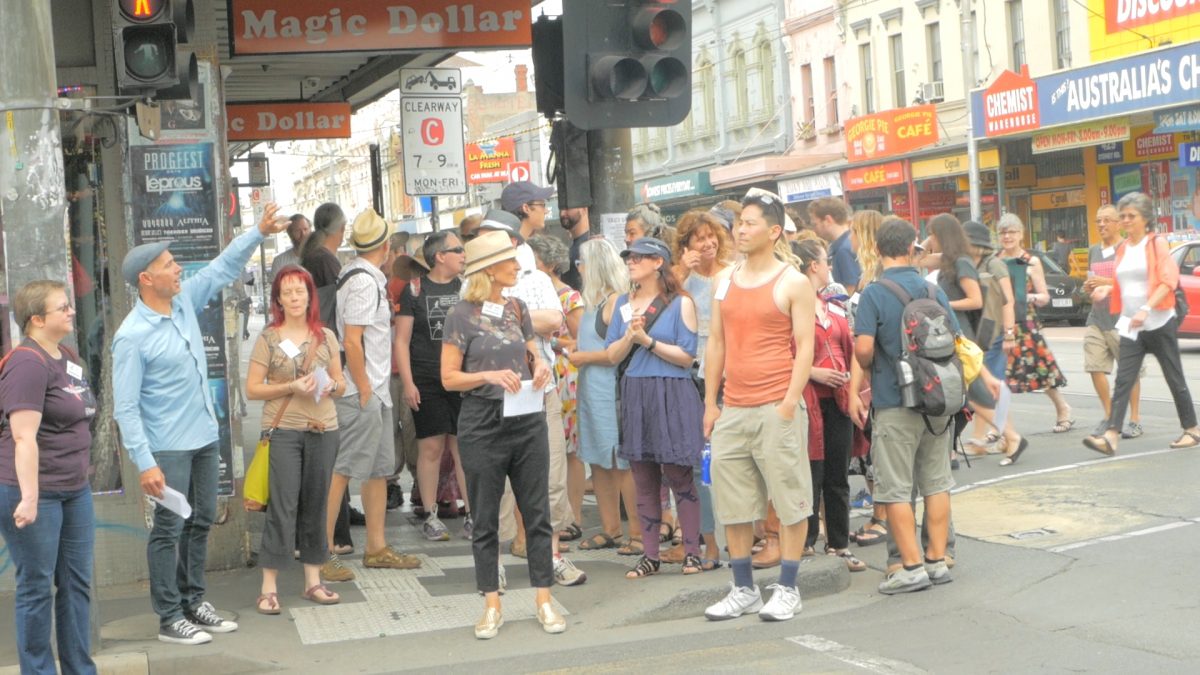Community under construction in Melbourne’s apartment developments

If 2020 taught us anything, it is that strong, local social connections are vital when communities are faced with life-changing disruptions. Even in the absence of bushfires and global pandemics, or the unknown shock events that are yet to come, local-level social cohesion is important to maintaining thriving, safe and healthy communities.
In established places, relationships and networks grow and deepen over time. But what about in new developments? We generally assume that some models of development can facilitate a more cohesive social environment than others. Community-led projects are often considered the gold standard in making places for people, simply because they involve the people in the place-making. Such developments are far from mainstream in Australia, so what about developer-led models of residential development? Can they achieve the same outcomes?
Knitting a strong social fabric
Social cohesion and social capital have increasingly been understood as foundational to personal wellbeing and a stable, functional society. Both terms are often defined differently, and the two are sometimes used interchangeably. What is central to these concepts, however, is a recognition of the value of interpersonal connections and social relationships, and the networks generated from them. These personal connections benefit individuals, who can rely on one another for mutual support, and cohorts, who can leverage strength in numbers to motivate societal change.

Volunteer organisations, religious institutions and sporting cultures – among other forms of civic engagement – provide platforms for building a strong social fabric. Through his book Bowling Alone: The Collapse and Revival of American Community, American sociologist Robert Putnam piqued public interest in this idea by exploring links between disengagement in politics and a decline in public participation in certain types of civil society organisations. Some trends influencing this change, including women’s increased participation in the workforce, reflect positive cultural changes. Other trends that have re-oriented how we spend our time are less encouraging; perhaps most obviously, the search for affordable housing has forced many households into patterns of long car-based commutes, leaving little time for civic engagement. Some arguments suggest that virtual networks and social media provide new, more flexible platforms for ‘building community.’ But as stand-alone mechanisms for inter-personal relationships, these forums can have a darker side, devolving into echo chambers and allowing participants to hide behind virtual identities. And, as COVID-19 reminds us, all the technology in the world isn’t the same as face-to-face interaction.
These are important debates in good times, and a matter of life and death in bad. Time and again, we see the power of social networks in disaster preparedness and response. In New Orleans, communities with greater cohesion returned and rebuilt more quickly and effectively after Hurricane Katrina. In Chicago, two similarly low socioeconomic neighbourhoods with distinctly different levels of engagement from civic institutions saw vastly different death tolls from a historic heat wave. And in Australia, community action is formally recognised as key to bushfire management. These aren’t one-off examples, either: years of studying outcomes from disasters have led researchers such as Daniel Aldrich and Eric Klinenberg to conclude that community trust and networks are more critical to our resilience than formal emergency responses.
Again, the pandemic demonstrates this every day: how many of us have relied on neighbours to pick up groceries while we await COVID-19 test results? How many stories have we heard of neighbourly bonds forming and strengthening over the fence?
Community in place
This is why place matters. Lockdown has shown us the importance of neighbourhoods as places for building compassion. As Hugh Mackay noted in his Australia Day speech in 2019: “Ultimately, the health of any society (especially its mental health) depends upon the health of its local neighbourhoods – the streets, apartment blocks, suburbs, towns where we actually live; the places where we need to feel as if we belong; the places where we have to learn how to get along with people we didn’t choose to live amongst…the places where feelings of loneliness and social isolation are most likely to overwhelm us; the places where homelessness begins.”
We’ve also experienced practical gaps in what spatially dispersed or virtual networks can do. In North Melbourne, the Refuge program at Arts House, which brings together artists, emergency services and community groups to simulate a different emergency each year, literally practiced for a pandemic two years ago. Not surprisingly, locals sprang into action when lockdown restrictions hit.
Easy enough in established places like North Melbourne, you may say, where residents, retail and community amenities have existed for decades. Social scientist and urban researcher Talja Blokland’s idea of community as a ‘performance’ – including organically shaping rhythms and dances with those who are part of our local routines – is easier to imagine when family-owned shops and the pub on the corner have been around for years. But what about all of the new residences being built in Melbourne, racing to keep up with a fast-growing population? Blokland also notes that more transient groups, or recent arrivals in a place, often quickly seek a sense of belonging and establishment. We want connection, we know it’s good for us, and we look for it in the places where we live.
Leading with community
It’s natural, then, to believe that some approaches to new development can facilitate stronger social cohesion and community resilience outcomes than others. This was the hypothesis underpinning Resilient Melbourne’s Resilient Communities in Residential and Mixed-use Developments program, which was designed to respond to the question: How do we create and sustain buildings, infrastructure and neighbourhoods that build resilience by genuinely reflecting the needs, values and aspirations of the communities using or occupying these spaces? The program explored this question through a series of development site partnerships and collaborations with policymakers, practitioners and researchers. Over the long term, the aim is to understand whether participatory development models contribute to stronger built-form outcomes and greater community connection as a result of the planning and development process itself.
Just as there is a broad range of financial models for delivering housing, so too is there a spectrum of participation. An assumption has been surfacing that more community-led, deliberative models are inherently ‘good’, and that they automatically generate vibrant, sustainable, cohesive and resilient places. We don’t actually have firm evidence to prove this, at least not yet in an Australian context. Longitudinal research is underway, now in partnership with the City of Melbourne, to understand health and wellbeing outcomes at two Resilient Communities sites, Urban Coup’s Near and Tall (a co-housing apartment building) and Assemble’s 393 Macaulay Rd. in Kensington, as well as Nightingale Village. It will take time, however, to be able to draw conclusions about resident’s individual and collective experiences in these places.
While we wait for formal evidence to emerge, there is, of course, reason to believe that community-led models deserve to play a larger role in our housing delivery system. Importantly, such models prioritise liveability over investment return. At the individual level, this influences spatial design of homes and consideration of factors such as useable area and equitable access to natural light. At the site level, this results in a focus on creating generous, inviting and practical shared spaces – multi-purpose rooms, workshops, kitchens and gardens, among others – that are not only designed to support and facilitate social connection among residents, but also increase the amount of community co-operation required for ongoing management.
Building social cohesion through community-led development may ultimately prove to be a self-fulfilling prophecy. Co-housing and other community-led models attract residents who are specifically seeking a community-focused environment. While residents may come from diverse backgrounds, they share a commitment to participating in deliberative and collective decision-making – processes that require a considerable investment of time. These groups aren’t immune to conflict, but they establish norms that prioritise the collective good and create guardrails to maintain cohesion. Perhaps counterintuitively, successful community-led development is far from informal; rather, it relies on clear processes and structures to succeed.
The journey of creating such structures acts as a compelling ‘dress rehearsal’ for residents before they actually live together.
Enter, the developer
Can developers come close to emulating the social cohesion outcomes embedded in community-led housing models? The ‘big bad developer’ persona is a popular one, if misleading in its indictment that all developers sit on the cold and heartless end of the participatory development spectrum.
Yes, financial returns factor into decision making when developers design, build and sell homes. But developers build what the market will buy, and increasingly, the market wants to buy a community, or at least a stage and set that make performing community easy to imagine. Communal spaces of many varieties are now presented in new developments of all sizes, from infill apartment blocks to greenfield suburbs. Such amenities are converging – not universally, but notably – with resident-defined features included in community-led development. At a smaller scale, these include rooftop gardens and dining areas and community rooms that accommodate a breadth of uses. In new suburbs, we see examples of developers front-loading substantial investment in community hubs and recreation centres to ensure that they are open as soon as the first residents arrive.
These features look great in marketing materials, but a build-it-and-they-will-come mentality is unlikely to quickly generate the trusted social connections and networks that we know are important. As observed through the Resilient Communities program, some developers are venturing further to test new approaches to ‘fast-tracking’ community connection. As soon as residents are identified, community development teams provide virtual and in-person opportunities for future neighbours to meet and bond over their shared anticipation of settling in their new homes. We also see examples of developers seeking future resident’s input on public realm design decisions and moderating programs to prepare future residents to settle in their new homes. From a commercial perspective, these are smart moves: they create a ‘stickiness’ in new places that contributes to a strong brand and future sales. It’s no surprise, then, to see marketing teams adopting community development language.

Just because community sells doesn’t mean that developers shouldn’t encourage it. And, where genuine commitment to social cohesion outcomes exist, we see developers working behind the scenes, away from marketing suites, to establish partnerships with the likes of social enterprises and local councils to create frameworks for communities to shape their own futures. Through such collaborations, resident reference groups and leadership development programs are activating community voices from the outset. As with community-led development, all of this takes time and commitment. Recognising that not everyone is prepared or able to invest in the demands of community-led development, it is worthwhile to grow, learn from and build on the mix of emerging developer-led models. In fact, encouraging a diversity of approaches to community-building should be part of our aspiration. Returning to Blokland, “for resilient cities, an urban community is necessary. Fortunately such communities are everywhere—for those who care to see”.
This story was produced for our issue #14 Work. To grab a print copy (and pay only postage) head over to our shop.


